|
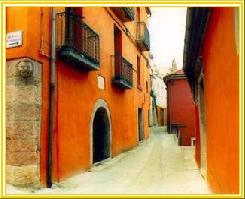
CALITRI
CALITRI in green Irpinia:
an oasis of peace and quiet unmarred by mass tourism a mere 1½ hour away from
Naples
CALITRI in green Irpinia:
blessed by the presence of adjacent nature parks and lakes
CALITRI in green Irpinia:
strategically/centrally located magnet for through tourism to Apulia,
Basilicata, and the Gargano peninsula
CALITRI in green Irpinia:
a link in the endless chain of castles, churches and convents that arose during
centuries of feudal and clerical rule
CALITRI in green Irpinia:
dominated by Samnites, Goths, Lombards, Romans, Byzantines, Normans,
Hohenstaufens, Anjous, Aragonese, Bonapartes, and Bourbons, a cultural jigsaw
puzzle and horn of plenty of folklore
CALITRI in green Irpinia:
its historic centre a treasure-trove of buildings bearing sculpted masks, shells,
animal figures and family coats of arms, often dating back to the Middle Ages
CALITRI in green Irpinia:
where the air is still filled with the aroma of home-baked bread and crackling
fireplaces
CALITRI in green Irpinia:
free of mafia activities
|
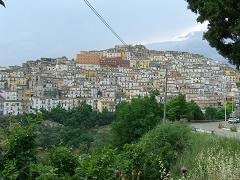
|
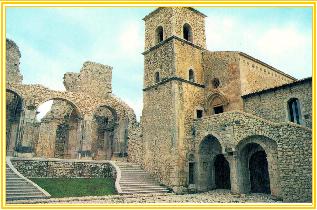
Abbey of Goleto
Environs of Calitri
-
the archaeological park of
ancient Conza
-
Rionero in Vulture, from
where one can commence excursions to the extinct Monte Vulture volcano
(1326m)
-
the twin lakes of
Monticchio, known
for its natural beauty, Gaudianella mineral water springs,
S. Michele abbey from the 17th century
-
the 12th century convent
complex S. Guglielmo at S. Angelo dei Lombardi
-
the new museum located in
the S. Francesco a Folloni abbey with its church of the same name and
the S. Maria del Monte convent located in the Montella hills
-
the castle of Frederik II
of Hohenstaufen, king of both Sicily and Jerusalem, emperor of the
German Realm, at Lagopesole
-
The Norman castle at Melfi
and the cathedral begun in 1115
-
In Venosa, the Aragon
castle from the 15th century, place of birth of the Roman poet
Horatius, the S. Trinita cathedral with the Norman abbey and graves,
the Jewish necropolis
-
The Norman fortress at
Deliceto
-
The Norman castle at Bovino
-
The Norman castle at Ariano
Irpino
-
The Hohenstaufen castle at
Ascoli Satriano, Ortanova and Orsara
-
The place of pilgrimage
Montevergine from 1129 with 17th century basilica, museum, abbey
palace with its collection of antique Nativity scenes, 18th century
pharmacy with a collection of antique Majolica pharmacist's pots and
gilded boiserie, 16th century Flemish wall hangings and collection of
7,000 parchments
-
excursion to Naples: the
incomparable Baroque of the Neopolitan churches, the treasures in the
museums (now also open in the evening), the 13th and 14th century
castles Castel Nuovo, Castel Capuano, Castel S. Elmo, and Castel
dell'Ovo, the Royal palaces Palazzo Reale (1602), the Capodimonte
museum (1738) and the S. Carlo theatre (1737)
-
excursion to the commercial
city of Pompeii inundated by volcanic ash 79 years after Christ
-
The 'futuristic' district
of Bisaccia that contrasts so strikingly with the old village centre
and castle Pignatelli
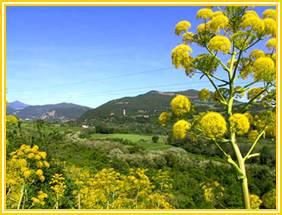 |
Monticchio Lakes
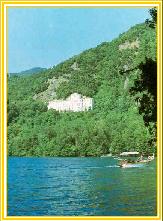
|
|